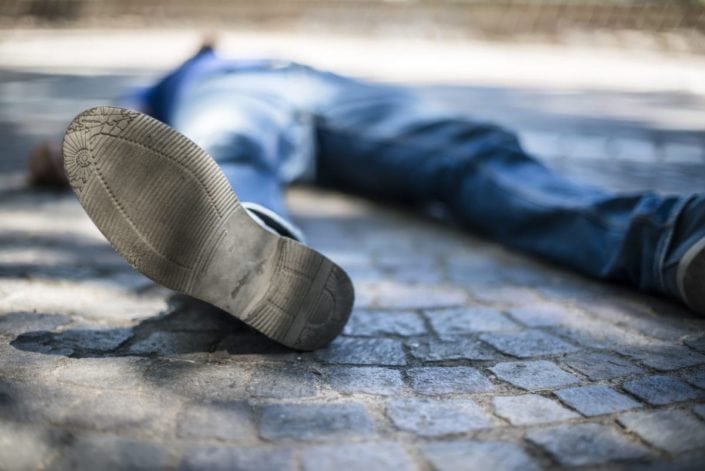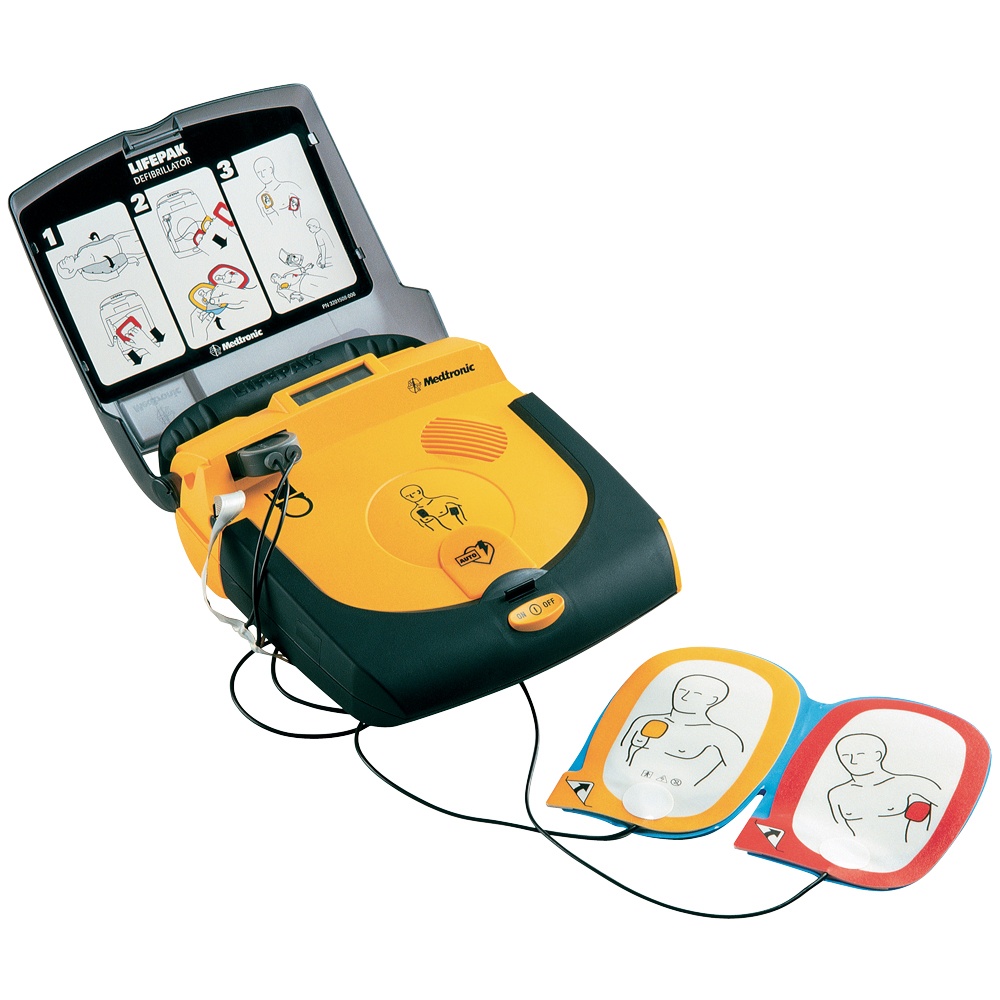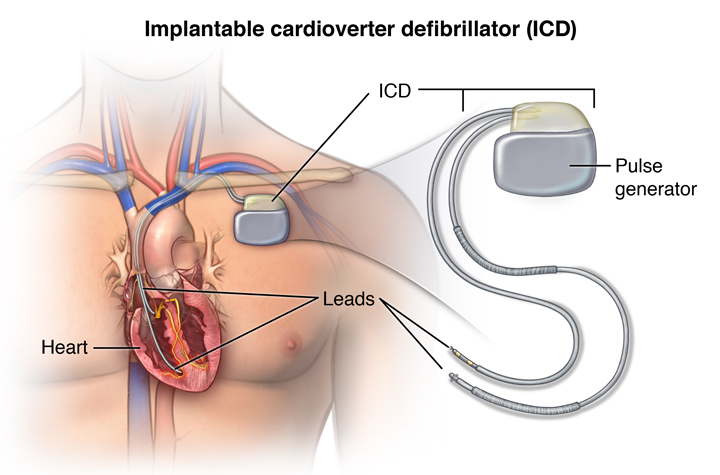
Not infrequently we come across news of young and healthy swimmer’s death in pool, or athlete’s death on playground etc. By its virtue, these events can occur at any time like while playing, getting from bed, sleep, walking etc. These deaths are mostly caused by unidentified cardiac defects and they are called as sudden cardiac death. ( SCD) .
Sudden cardiac arrest ( SCA) occurs when there is sudden, irregular and rapid electrical activity of ventricles called as ventricular tachycardia ( VT). VT can lead to ventricular fibrillation. The heart can not eject blood and it suddenly and unexpectedly stops beating. Other mechanism of SCA is cardiac standstill / asystole and pulseless electrical activity. The SCA is different from heart attack/ ischemic heart disease which is caused by blockage in blood vessel of heart. ( Heart attack is a leading cause of SCD in elderly.) Unless heart rhythm is restored immediately with treatment, there are very high chances of having irreversible damage to brain and even death may ensue. The death in this situation is called as SCD.
Immediate emergency treatment with cardiopulmonary resuscitation (CPR) or an automated external defibrillator (AED) can help restart a stopped heart and allow return of a normal heartbeat to help prevent sudden cardiac death (SCD).
Although SCD is rare in children, it can affect anyone, even those who are physically fit. Each year, SCD accounts for approximately 3-5 percent of all deaths in children aged 5-19 years. It is also responsible for 10-15 percent of sudden unexpected infant deaths.
Causes of sudden cardiac arrest
Causes of SCA in childhood are different heart conditions than those causing the majority of SCA in adults.
The most common causes of SCA in children are:
- Structural cardiac abnormalities
- Congenital heart diseases : Un operated Tetralogy of Fallot, Severe aortic / pulmonary stenosis,
- Severe pulmonary hypertension in congenital heart defects: VSD/ PDA etc with pulmonary hypertension
- Operated congenital heart defects: Operated TOF/ TGA/Fontan
- Coronary artery anomalies, : Anomalous origin of Left coronary from pulmonary artery, Left main from Right coronary cusp etc
- Marfan syndrome
- Abnormalities of the electrical properties / conduction system of the heart:
- long QT syndrome, and
- Wolff-Parkinson-White syndrome
- Brugada syndrome,
- catecholaminergic polymorphic ventricular tachycardia (CPVT),
- Congenital or acquired complete heart block
- Atrial arrhythmia
- Cardiomyopathies: Abnormalities of structure or function of the heart muscle,
- Hypertrophic cardiomyopathy (HCM),
- arrhythmogenic right ventricular cardiomyopathy (ARVC)
- dilated cardiomyopathy
- Inflammation/ infection of heart muscle: myocarditis
- Premature atherosclerotic coronary disease: as in case of hereditary hypercholesterolemia
- Commotio cordis (caused by a blow to the chest)
- Drug-induced SCA: Cocaine, LSD, , inhalants, recreational or club drugs, and some prescription medications
Conditions causing SCD are typically not diagnosed prior to the arrest. In many cases, these conditions are inherited, but family members are unaware of their family history.
Symptoms of sudden cardiac arrest
Warning signs and symptoms do exist in 30-50 percent of cases of SCA/SCD, but are often ignored or misunderstood.
If your child has any of the warning signs or symptoms of SCA, make an immediate appointment with your pediatrician or take your child to the emergency room if they appear distressed in any way.
Warning signs and symptoms may include:
- Chest pain or discomfort on exercise
- Unexplained fainting (syncope) or near fainting, especially with or just after activity
- Repeated episodes of unexplained fainting (syncope)
- History of recurrent fainting or unusual seizures/seizure-like activity, especially with or just after activity
- Dizziness or lightheadedness
- Racing heart rate, palpitations
- Excessive fatigue or unexplained shortness of breath with exercise
- Recent viral infection with chest pain or change in exercise tolerance
- History of a heart murmur whose cause has not been determined with certainty
- History of high blood pressure
- Prior evaluation or treatment for a cardiac condition
- Restriction from activity because of a cardiac issue
- Unexplained sudden death in family before age of 50yrs.
- Family history of SCD
In more than half of the cases of SCD in children, death was completely unexpected. Children are not aware of risk factors . They may also feel hesitant or embarrassed to tell parents about the symptoms and also they are unaware about seriousness of symptoms. Educating parents, children and teenagers about the symptoms and risk factors of SCA is one way to help prevent it.
Diagnosis of sudden cardiac arrest
If pediatrician suspects that a child is at risk for SCD, he/ she might refer it to a pediatric cardiologist, a doctor who specializes in heart problems in children.
A pediatric cardiologist will listen to complains in detail and perform thorough examination. There will be questions about circumstances that led to the symptoms, child’s medical history and the family medical history. The cardiologist will read an electrocardiogram (ECG or EKG), a record of the electrical activity of your child’s heart. Other tests that help in diagnosis are exercise stress test, echocardiogram, or chest X-ray, an ambulatory cardiac event monitor or a Holter monitor to continuously record child’s heart rhythm for a specific length of time as she goes about her normal activities.
If your child has experienced one of the warning signs or symptoms of sudden cardiac arrest, their pediatric cardiology evaluation may indicate a normal heart needing no further testing. It could also result in further testing or follow up evaluations, if needed.
Treatment for sudden cardiac arrest
SCA requires immediate attention. If a child suddenly collapses and does not immediately awaken, call for help/ ambulance and start cardiopulmonary resuscitation. . If an AED is available, it should be applied. The best chance of SCA survival is prompt recognition, and a planned emergency response with CPR and AED use. If sudden cardiac arrest is not treated within minutes to establish a normal heart rhythm, a person will die.
Chain of survival
The chain of survival concept represents the sequence of five events that must occur quickly to optimize a person’s chance of surviving a cardiac arrest. The five links of the chain:
- Immediate recognition of cardiac arrest and activation of the emergency response system.
- Early cardiopulmonary resuscitation (CPR) with emphasis on chest compressions.
- Rapid defibrillation using an AED can establish a normal heart rhythm to a person suffering a cardiac arrest. It is most effective when it is performed in the first few minutes of a cardiac arrest.
- Effective advanced life support.
- Multi modal post-cardiac arrest care.
How CPR works
During CPR the victim is made to lie on back on a flat ground and chest is compressed manually. It helps to pumps blood around the body and maintains the circulation, allowing blood to circulate and reach the body organs and brain, until a normal heart beat can be restored. Hands-only CPR is most effective when performed immediately after the collapse and when an AED is also applied quickly.

CPR should be continue until emergency medical services (EMS) arrives and takes over, unless the affected person has a return of normal circulation (either spontaneously or after AED shock) and is awake (moving and breathing), and alert and talking. Rescue breathing as part of CPR is recommended to be used by trained health professionals.
How AEDs work ( Automated external defibrillator)
The sudden cardiac arrest is due to abnormal rhythm of heart (ventricular tachycardia/ fibrillation ). The electrical shock delivered by an AED through the chest (which travels to the heart)can terminate the abnormal, ineffective rhythm. This permits a normal heart rhythm to restore. Quicker the shock is delivered and heart rhythm is restored, better are the chance of survival and every delay by 1minute decreases success by 10 percent .

AEDs as name suggest can detect abnormal rhythm and deliver shock fully automaticaaly once applied to victim. are safe for use by anyone who has been trained to use them, as well as bystanders who follow instructions given by the devices. Studies have shown that sixth-graders briefly trained in AED use are able to correctly operate the device almost as quickly as emergency medical personnel. Widespread deployment of AEDs and increased awareness of bystander CPR can save thousands of lives.
Treatment modalities:
Once a child is diagnosed to have a cardiac condition which puts him at risk of of SCA and SCD, a variety of treatment options are tried. They include medication ( beta blockers, anti arrhythmic ), permanent pacemaker implantation with drugs, cervical sympathectomy, implantable cardiac defibrillator etc. Patients need to follow certain restriction like avoid deep waters, strenuous exercise, a list of medications etc.
Implantable cardioverter defibrillators (ICD)
In a few cases pediatric cardiologist, cardiac electrophysiologist (EP) or surgeon may implant a defibrillator in a child or adolescent who has had a SCA or is thought to be at risk for having a SCA to prevent SCD. An implantable cardioverter defibrillator is a small computerized device with an energy source for defibrillation or pacing.

An ICD has wires with electrodes on the ends that connect to your child’s heart chambers. It can recognize a life-threatening abnormal rhythm and provide an electrical shock that allows the normal rhythm to resume.
An ICD is implanted following guidelines for children who have sustained a SCA and survived or who are thought to be at high risk for such a cardiac event. Children who have received an ICD for either reason may have these ICDs discharge to prevent SCD.
Prevention
Primary prevention
Primary prevention refers to methods used to prevent sudden cardiac arrest from occurring in a patient who is at high risk. Reducing the incidence and prevalence of sudden cardiac death requires identification of a predisposing condition and early intervention.
Primary prevention includes evaluation of those with warning signs and symptoms or a positive family history. Identifying a heart condition or other risk factors allows for early intervention with medication, lifestyle alterations, and defibrillation devices.
Secondary prevention
Secondary prevention refers to methods used to prevent sudden cardiac death from occurring once someone has experienced a sudden cardiac arrest. These methods include an implantable cardioverter defibrillator (ICD), medications, pacemaker, cervical sympathectomy etc. .
Long-term outlook for sudden cardiac arrest
When sudden cardiac arrest is identified and treated, children and adolescents can be expected to have an excellent outlook or prognosis. Outcomes will vary depending on the cause of the SCA.
Can we diagnose at risk before birth?
A few of these conditions are inherited. If genetic mutation of diseased in family is know, we can look for same in fetus. Disorders that can be diagnosed in this way are hypertrophic cardiomyopathy, long QT syndrome, etc.

REPLY COMMENT